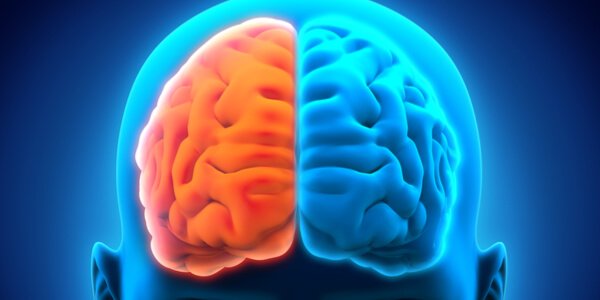3 Interesting Neurological Disorders

The brain is a complex organ in charge of most of our behaviors, but it’s also the home of our thoughts and emotions. Investigating the biology of the brain is an essential part of understanding cognition. However, its complexity, plus all of the inherent methodological difficulties, greatly hinders our exploration of the nervous system. But one way to understand how it works is by studying neurological disorders.
Usually, damage to the nervous system has notable effects on our behavior. If we associate these consequences with the particular areas that were damaged, we could locate certain functions and processes.
That said, we have to be careful here since people with neurological disorders have special conditions. These conditions can create biases and “contaminate” conclusions. Examples of this bias can be seen in individuals who have multiple areas of brain damage or who take medication with side effects.
In this article, we’re going to talk about three extraordinary neurological disorders. We’ll explain blindsight, visual hemineglect, and split-brain syndrome.

Blindsight
Imagine you’re in a room with someone who was recently in an accident and suffered brain damage. They tell you that they can’t see absolutely anything. They are now blind. But something’s off: their eyes are following you. So, you investigate a little.
When you ask them to grab a certain object, their hand reaches out and takes hold of it as if they could see it. And that’s not all. If you ask them to guess how many fingers you’re holding up, they guess correctly. Much more than if they were just guessing randomly. How is this possible?
They are indeed seeing the world around them, but they keep saying they’re blind. Does this mean that they’re lying? The answer is no. The problem is that they’re incapable of understanding what they are seeing. Unconsciously, they’re processing the visual stimuli, but there’s a failure and this data doesn’t get sent to the conscious mind.
This is one of the most interesting neurological disorders that exists. People with blindsight are living proof that some cerebral processes don’t require the intervention of our conscious mind.
Hemispatial neglect or visual hemineglect
Visual hemineglect is another attentional neurological disorder like blindsight. It’s associated with damage in the right prefrontal cortex, or PFC. One key to understanding it is that the left prefrontal cortex, or lPFC, is in charge of attention of the right side of the visual field. Likewise, the rPFC is in charge of attention of the left visual field. Thus, damage to the rPFC would leave an individual with a lack of attention of the left visual field.
But, what consequences would there be to not paying attention to one half of your visual field? Well, you could only see the right side of things. You would do things like only eating the right side of your plate, putting makeup on only the right half of your face, and drawing only the right side of objects. The most unbelievable part of this disorder is that you wouldn’t be aware there’s an issue. It would seem normal and coherent to you.
Another interesting concept is that it doesn’t only affect what your eyes take in. It also affects your imagination. Say you are told to imagine yourself in a plaza in Milan and to describe the scene.
You would only mention things found on the right. But if you were asked to turn around, you won’t be able to mention the objects previously on your right hand side: now they’re on your left side. So now you’d describe things you didn’t when you were facing the other way.
Split-brain syndrome
Our last disorder, and one of the most fascinating neurological disorders that exist, is split-brain syndrome: split hemispheres. In severe cases, an operation called corpus callosotomy needs to be done. This operation involves severing the corpus callosum, which is the biggest connection between the two hemispheres. In other words, the surgeon would disconnect the two halves of your brain.

One of the most interesting symptoms of split-brain condition is alien hand syndrome. Here, the patient’s left hand seems to have a life of its own and the individual is not capable of telling you what it’s doing. The reason is that the area in charge of voluntary movements of the left hand is found in the right hemisphere. But the area for language is found on the left side.
In alien hand disorder, we can see how each hemisphere performs actions independently. There are plenty of anecdotes from patients that support this. For example, a patient was reading a book, while his left hand tried to close it. Since the right hemisphere doesn’t know how to read, it was bored. In another case, a patient was trying to hit his spouse with his left hand while trying to avoid doing so with his right hand. Fascinating!
This text is provided for informational purposes only and does not replace consultation with a professional. If in doubt, consult your specialist.








